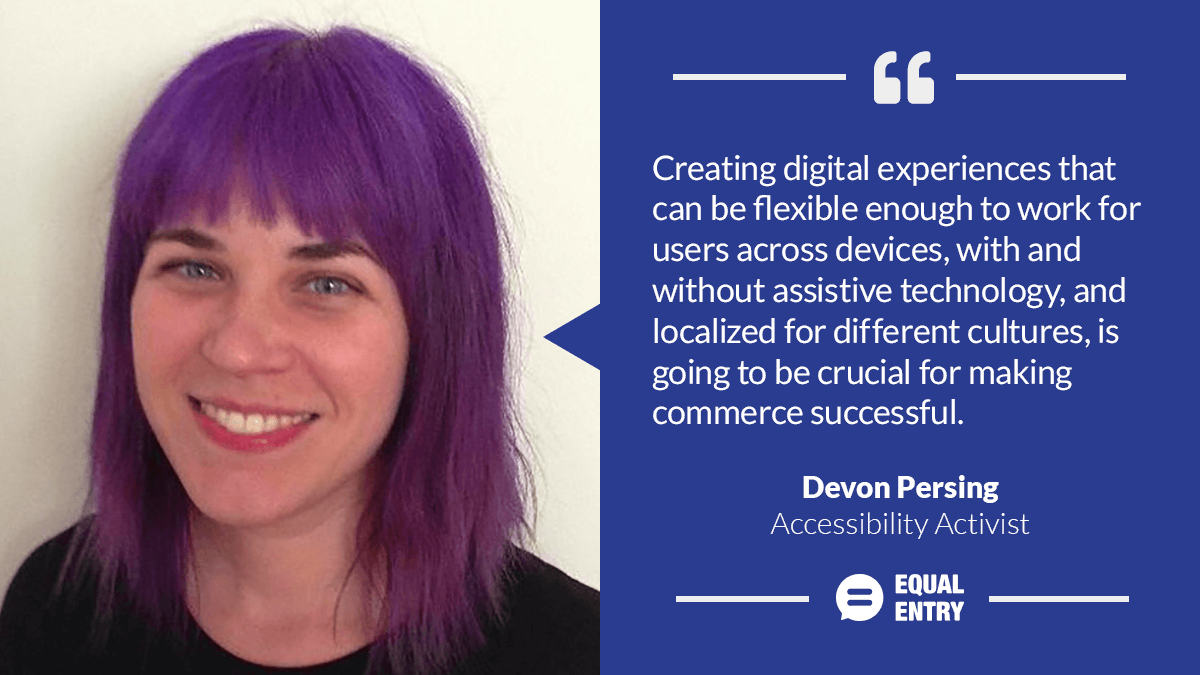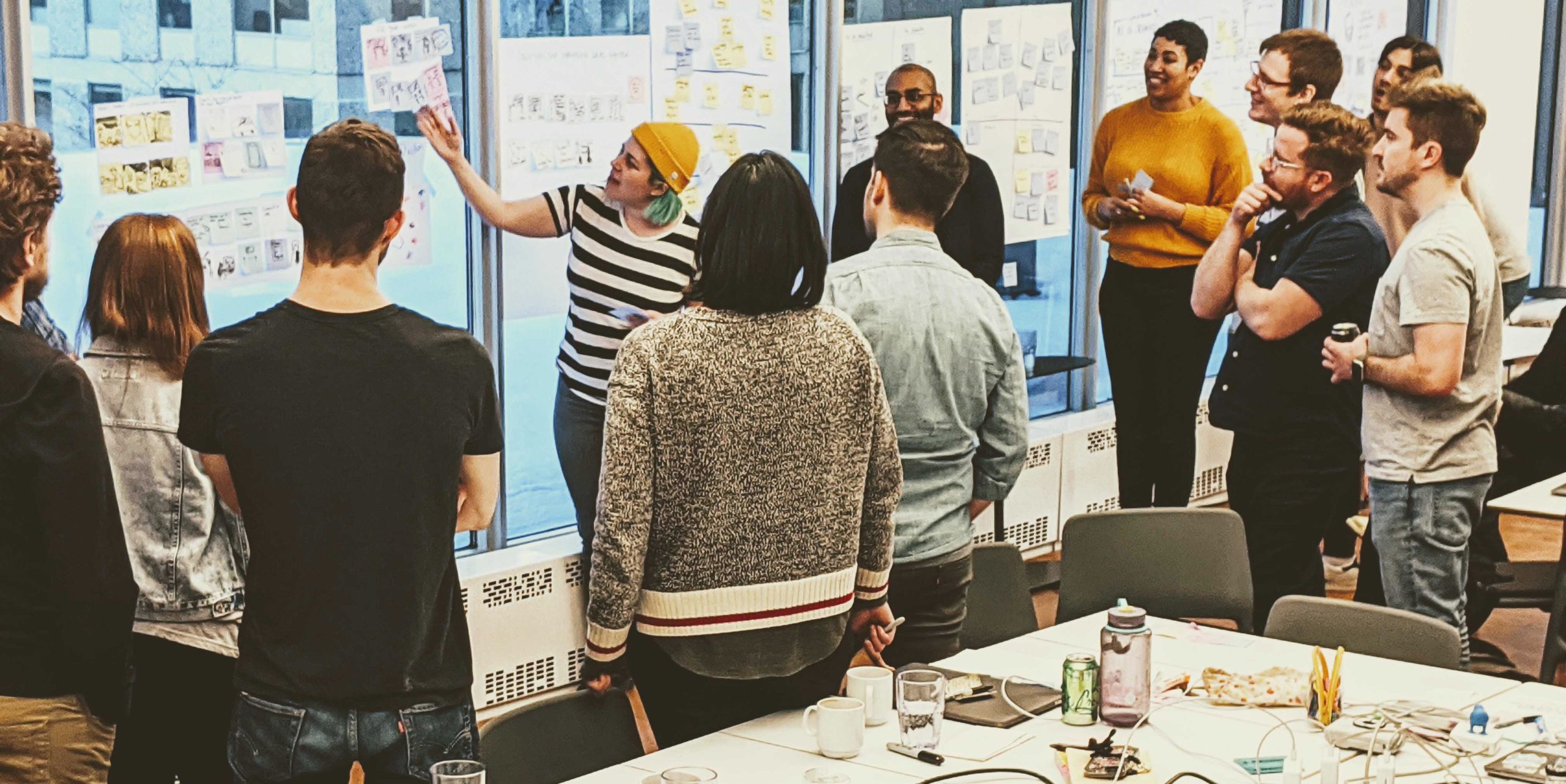Summary

Devon Persing is an accessibility specialist at Shopify, and has been working in digital accessibility since 2012. Her current focus is on accessibility programming and education through work on the UX Operations team, as well as through co-leading Shopify’s Accessibility Guild and employee resource group for employees with disabilities. She lives in Seattle, Washington.
How did you get your start in accessibility?
I came into accessibility by accident. I started working in libraries when I was quite young, and knew that helping people get access to information would always be part of my work. While I was getting my library degree, I also took courses in social work and public policy, which helped me really start to piece together how accessibility fits into every facet of people’s lives and all of our institutions.
My first real steps into web accessibility were when I was working at the University of Michigan after graduate school. I did front-end web development for an online publication platform, and collaborated on usability and accessibility work for digital library services.
As an information science professional with cross-industry experience, how do you go about cultivating accessibility awareness and engagement in different work environments?
I approach engaging with pretty much anyone on the topic of accessibility as an opportunity to help them learn and figure out how to integrate accessibility into their current work and thinking. I used to do a lot of introductory training and teaching, but there are so many resources available to folks. I find the thing people really struggle with is taking best practices and accessibility principles and applying them to their everyday work.
I treat interactions pretty much like I would treat requests to help patrons in libraries. I try to figure out where people are in their own accessibility journey and match them with resources that will not only meet their goals but help them really take charge of their own learning. Often this is through helping designers and developers do usability testing with people with disabilities, or helping teams organize talks and events where they can share what they’ve learned with their colleagues.

I also try to help destigmatize disability in the workplace. Getting more comfortable talking about my own chronic illness and disability helps. It also helps to closely align programs and events about accessibility with the needs and voices of other disabled colleagues, to show how accessibility and disability are crucial to understanding the needs of our users and the sustainability of the products we make.
Your expertise in e-commerce accessibility integration is an asset to those looking to build more inclusive purchase pathways for their clients. What advice would you give to designers about the future of e-commerce platform development?
I think the biggest thing to keep in mind is digital commerce doesn’t begin and end with a desktop web UI. Huge numbers of people are shopping on mobile, on poor connections, and with smart home devices. Creating digital experiences that can be flexible enough to work for users across devices, with and without assistive technology, and localized for different cultures, is going to be crucial for making commerce successful.
What is an accessibility barrier you would like to see solved?
Where to start! A barrier that needs to be crushed is everything that blocks employment opportunities for people with disabilities. We need to make applying, interviewing, and working accessible, not just technically accessible, but actually approachable for people with disabilities and people who are neuroatypical. Getting more people with disabilities into organizations that design and build all sorts of products is the only way to make those products actually accessible to the people who need them.